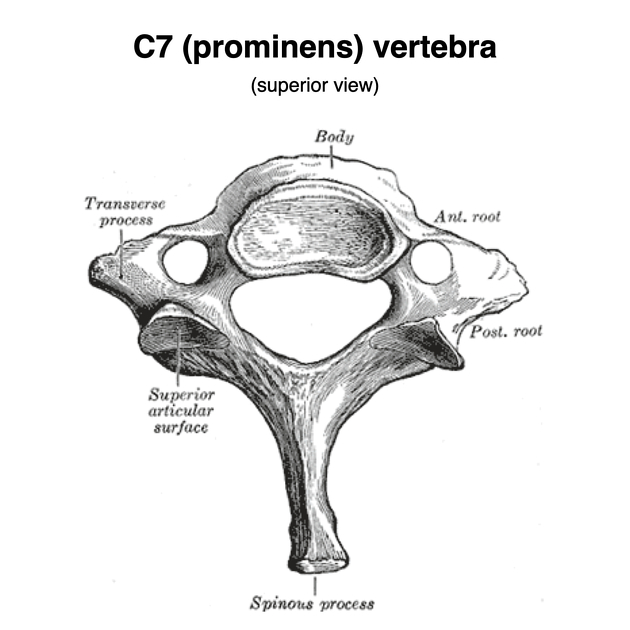Cervical spine
Updates to Article Attributes
The cervical spine is the upper part of the spine extending from the skull base to the thorax at the level of the first vertebra with a rib attached to it. It normally consists of 7seven vertebrae. Its main function is to support the skull and maintain the relative positions of the brain and spinal cord.
Gross anatomy
Although C1 (atlas) and C2 (axis) have unique characteristics and C7 (also termed vertebra prominens) deviates from the overall pattern, general characteristics of the cervical vertebrae include:
- small, oval-sized vertebral bodies
- relatively wide vertebral arch with large vertebral foramen
- relatively long, bifid (except for C7) inferiorly pointing spinous processes
- transverse foramina
in fused transverse and costal processesprotecting the vertebral arteries and veins
A more detailed description can be found in the article on typical cervical vertebrae.
References changed:
- 1. Martini F, Ober WC, Garrison CW et-al. Fundamentals of anatomy & physiology. Prentice Hall College Div. ISBN:0130172928. <a href="http://books.google.com/books?vid=ISBN0130172928">Read it at Google Books</a> - <a href="http://www.amazon.com/gp/product/0130172928">Find it at Amazon</a><span class="auto"></span>
Tags changed:
- spine
- anatomy
Sections changed:
- Anatomy
Systems changed:
- Musculoskeletal













 Unable to process the form. Check for errors and try again.
Unable to process the form. Check for errors and try again.